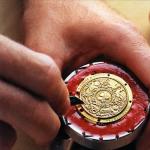Business idea growing corn. Business idea growing corn with calculations Marketing strategy for selling corn
In the conditions of small-scale production, sweet corn is one of the most profitable crops. In the summer market for fresh products, the demand for it is always high. And such a novelty as super-sweet corn - which can be eaten even raw - is sold 3-5 times more expensive than regular varieties.
Those who directly deal with agricultural production have a good idea of its real profitability. It is characterized by a high level of labor and funds costs, as well as significant risks associated with weather conditions, the human factor, and market fluctuations. At the same time, many crops give a low profit. There are many farms where the result is considered good if a ruble of profit comes out for the spent ruble, i.e. profitability - 100%.
However, a number of vegetable, industrial crops and some field crops can provide significantly higher rates. In this case, it is often not so much the yield that plays the decisive role, but the quality of the product. But of paramount importance, of course, are the timing of entry into the market, on which the selling price depends. Sweet corn is one such profitable crop.
As the experience of recent years has shown, early and late corn is the most profitable. In the first case, the profit is determined by the price, in the second - by the low level of costs and, to some extent, by the price increase.
CHOOSE EARLY AND LATE VARIETIES
Among Russian breeding achievements, hybrids and varieties stand out the most:
● 65–75 days from germination - F1 Molasses, F1 Creamy Nectar;
● 85–95 days from germination - Kuban sugar 210, Lakomka, Triple sweetness.
Well proven in production conditions:
● early sweet corn hybrids (65–75 days from germination) – F1 Spirit, F1 Trophy, F1 Sheba, F1 Legend, F1 Super Sundance;
● as well as later sweet corn hybrids (75–90 days) – F1 Merkur, F1 Bonus, F1 Challenger.
Among the varieties of sweet corn for fresh consumption, the leading role belongs to foreign hybrids. This is due to the good preparation of the seed, including cleaning, calibration and encrustation. In Europe, the selection of hydrides for the fresh market is separate from the selection of commercial hybrids. Therefore, products on the market in all respects (these are fulfillment, evenness, taste) are invariably distinguished by high consumer qualities.
Healthy treat
Varieties of sweet corn are characterized by a very delicate taste; they contain much more sugars and other nutrients than feed. In terms of nutritional value, sweet corn is not inferior to green peas and vegetable beans. Its grain contains up to 4% proteins, 4–8% sugars, 12–15% starch, 1.2% fat, many vitamins, especially B1, PP, B2, ascorbic acid. A distinctive feature of sweet corn is the structure of its grain. Due to the high content of sugars (at the stage of milky-wax ripeness), when ripe, it becomes glassy and wrinkled.
WHAT YOU NEED FOR A HIGH YIELD
The ecology of the culture and the range of modern varieties and hybrids make it possible to grow sweet corn in fairly high latitudes. We note the main requirements of the culture, in terms of its biological characteristics, the violation of which can reduce the yield or its quality:
● Soil temperature should not be below 12°C, otherwise the plants are under significant stress, which sometimes leads to a complete loss of yield. The optimum soil temperature is 25…27°C.
● The best conditions for growth are formed at an air temperature of 27 ... 30 ° С. Until the 4th leaf phase, the plants are susceptible to frost, in later phases they are resistant to low negative temperatures (-2 ... -3С). When plants freeze, regeneration is possible due to lateral shoots; however, this significantly delays the harvesting time and reduces the yield. During the flowering period, cool weather is required for good pollen germination. With excessive heat above 30С, a grain occurs due to the drying of the stigmas of the cobs.
● High yields are obtained when soil moisture is not lower than 70% of the lowest moisture capacity. The critical period for soil moisture is the flowering phase.
● With sufficient soil moisture, air humidity does not determine the yield of sweet corn. An exception is the moment of pollination of the cobs, when it is impossible for the stigmas to dry out.
● The crop prefers fertile loamy soils with a medium reaction close to neutral.
GROW THROUGH SEEDLINGS
Growing seedlings is the best way to get an early harvest of corn. In addition, it helps to "deceive" soil pests, with a high population of which it is almost impossible to obtain high-quality seedlings.
Almost all hybrids and varieties of sweet corn are suitable for seedling crops, the main thing is to follow all the rules of cultivation.
For sowing, cassettes with 144 or 256 cells are quite suitable; the volume of the substrate in each is only a few cm³. You can use ready-made factory soils with fertilizers and ameliorants, inert substrates such as neutralized peat or your own soil, if it provides optimal water-air properties during the seedling growing period. Inert unfertilized substrates should be watered 2 times (in the phases of the 1st and 3rd leaf) with a solution of complete fertilizer such as Master, Mortar, Kemira, etc.
Sowing dates are determined by the timing of planting seedlings in the ground. Given that you should not keep plants in cassettes longer than the 3rd true leaf phase (about 3 weeks), sowing should be done 1 month before planting. If the seedlings are out of the ground for a longer time, this negatively affects the development of plants.
Seedlings of corn are planted under cover or in the ground when the soil warms up above 14 ° C and there is no threat of frost.
The optimal row spacing is 70 cm, but if necessary, a 50 × 90 cm scheme can be used. 6–7 pieces are placed. plants/m², depending on the precocity of the variety. Thus, the landing step is 20 cm.
Planting depth should be greater than the one on which the seedlings "sat". This will improve survival with less watering and stimulate the formation of secondary roots, which significantly increase the development of the soil by the root system and stably hold the plant in the ground.
DO NOT DO WITHOUT SUPPLEMENTS
Corn develops a fairly large mass, so the use of fertilizers is a necessary component of the technology for obtaining a good harvest. The most important elements of mineral nutrition: nitrogen (during the period of active mass growth after the 3rd leaf phase to the flowering phase), phosphorus (during the period of growth of the root mass after germination to the beginning of the heading phase), potassium (evenly throughout the entire growing season).
Trace elements are necessary during the period of growth of the root system, laying cobs, as well as flowering.
The most rational application of fertilizers is locally in rows before planting, with root top dressing during the growing season, but best of all - with water through a drip irrigation system.
The general norms of fertilizers in the active substance on loamy soils, with the availability of available forms of mineral nutrition elements not lower than average, can be as follows:
● 120–150 kg/ha nitrogen;
● 50–70 kg/ha of phosphorus;
● 90–110 kg/ha of potassium.
WATER PLANTS REGULARLY
Sweet corn makes quite high demands on soil moisture, so regular watering is the key to success in growing it. The best way is drip irrigation; with a planting pattern of 50 × 90 cm, 2 rows of plants can be placed along one tube. Daily moisture requirement for corn:
● in the phase “seedlings – 3rd leaf” – 10–15 m³/ha;
● in the phase "3rd leaf - the beginning of the growth of the leaf mass" - 20–25 m³/ha;
● in the phase of "panicleing" - 35–40 m³/ha;
● in the “blooming” phase – 50–55 m³/ha;
● after flowering - 40 m³/ha.
Given these data, the amount of precipitation and weather conditions, and irrigation should be carried out. Please note that furrow irrigation or sprinkler irrigation increases water consumption by 10-20%, depending on weather conditions and soil type.
In addition to watering and fertilizing, caring for sweet corn crops consists of loosening and weeding as needed.
Remove side shoots!
Pay special attention to the removal of side shoots in the axils of the lower leaves. With a good level of mineral nutrition, this operation can be repeated up to 2-3 times. By breaking off the shoots, you will receive a crop of cobs of the maximum size in a timely manner.
PEST PROTECTION NEEDED
With proper observance of crop rotation, the use of treated seeds and the timely removal of affected plants, fungal diseases, mainly smut, are no longer dangerous.
The control of young dicotyledonous weeds with herbicides is simple, because. for corn, there is an extensive arsenal of registered drugs. If there is a danger of contamination of crops with young monocotyledonous weeds (chicken millet, bristles, etc.), which cannot be destroyed during the growing season of corn, soil herbicides should be applied before sowing or emergence of crops: "Frontier Optima" (0.8–1.2 l/ha), Merlin (0.1–0.16 kg/ha), Stomp (3–6 l/ha), etc.
Polyphagous pests are extremely dangerous for planting corn: meadow moth, locust, etc. Tank mixtures of pyrethroids (Arrivo, Karate Zeon, Tzipi, etc.) with organophosphorus insecticides (Fufanon) are most effective in combating them. , "BI-58 N", "Aktellik", etc.).
During the period of growth of the cob in the phase of the beginning of milky ripeness, treatment is required almost annually from a number of species of beetle insects that are not pests. They are attracted by the sweet milk of grains, they bite into the leaves of the cob and eat away the grain, causing damage to the presentation of corn. The fight against them is effective at the beginning of their summer with the help of organophosphate insecticides, which not only infect insects, but also, having repellent properties, do not allow new individuals to climb into the cob.
PROFIT - 500,000 RUBLES PER HECTARE!
Corn harvesting begins at the beginning of the drying of the stigmas in the phase of milky ripeness. It should be noted that the maximum content of sugars falls precisely on this phase of development. Later, when the grains ripen, their number rapidly decreases in the process of transformation into starch. This should be taken into account when planning sales. If the needs of the market are small and cannot master the volume of production within the optimal terms from the consumer point of view, then, in addition to selecting varieties with different maturation dates, it is also necessary to maneuver the sowing dates, creating a continuous “conveyor line” of products. This will allow the manufacturer to easily find a buyer who, in turn, is always interested in the continuity of supply, and as a result, significantly reduce the risks and profitability of production.
Organization of cleaning work is quite simple. The productivity of 1 employee for a 7-hour working day is 2,500 cobs, taking into account preliminary preparation and bagging.
The experience of recent years has shown that every ruble spent on growing corn yields 6 rubles under shelter. income, seedlings in open ground - 4.0–4.5 rubles, sowing seeds - 3–4 rubles.
In the cost structure, most of the costs are for seedlings: about 1.2 rubles / piece. taking into account the cost of greenhouses, seeds, cassettes, labor and other items of expenditure. Further care, operation of machine and tractor units, protective equipment, fertilizers and irrigation cost about 53 thousand rubles/ha. Depending on the daily rate, the cost of harvesting one cob is 15–30 kopecks. To grow one plant, thus, costs about 2 rubles. 30 kop.
With a certain cultivation experience and good agricultural technology, up to 1.5 pcs. commodity cobs. However, in preliminary calculations, you should not take productivity above 1 cob.
The earliest corn from shelters costs about 15 rubles on the wholesale market, seedling corn from the ground - 10 rubles, seeded - 5-7 rubles. With the output of ears of 70 thousand pieces/ha, the gross income will be, respectively, 1,050 thousand, 700 thousand and 350–490 thousand rubles/ha.
The profitability of cultivation of the earliest corn reaches 600%, and the average profitability is 450%; and this is a very good result for agricultural production.
Characteristics of corn sugar hybrids
Seed consumption and corn density
D.Uskov, Candidate of Agricultural Sciences, agronomist, Akhtuba farm

It's time to plant

The root system must master the entire volume of the substrate

Secondary shoots can interfere with an early harvest

In the phase of the beginning of heading, weeds and secondary shoots are no longer scary
Cobs will be full
Often the simplest activity is the most profitable one, and the corn business is a clear illustration of this rule. It would seem that everyone can cook corn and sell it, but not all entrepreneurs take this step, thinking that there are always enough competitors in this business. And absolutely in vain! No matter how many competitors there are, this product will definitely find its admirer.
Making money on corn: easy!
All that is required for this type of business is the actual corn itself, a container for cooking it, and a small mobile point of sale. Moreover, you can not organize a point, but put the finished product in a thermos bag and, walking along the beach or a city street, sell it to everyone. In any situation, it is very profitable to conduct such a business - it is cheap. The corn itself is also cheap (you can sell boiled corn at the same time twice or even three times more expensive than the raw material was purchased), and the process of processing it, and the point of sale. All of this makes the corn business ideal for the novice entrepreneur. The main key to success in this work is to sell goods where there will be many who want to buy it. This, surprisingly, is not only children, but also adults, and they can be found both on the beach (the most popular place), and near large shopping centers, in parks and squares, in cinemas, at stations and markets. Moreover, you can be located near the office building, and its inhabitants will be happy to buy boiled corn as a kind of lunch. You need to take care of the point of sale in advance. Selling corn is a seasonal business that can only be done in the summer (usually in the second half) and autumn, so everything possible must be done to get optimal profits in these tight deadlines. The entrepreneur must be officially registered (an IP will be more than enough) and checked by a sanitation station (it must check the conditions for processing and selling products). This will allow in the future to avoid unexpected inspections and proceedings, which significantly complicate the business of selling corn, forcing the seller to stand idle for a long time. Also, if it is planned to organize a stationary point of sale, the work will need to be coordinated with the municipal authorities. However, in certain situations, this type of activity can be year-round. This is possible if you use frozen corn on the cob. Their shelf life reaches 2 years, but it should be borne in mind that they are still inferior in taste to a fresh product.
How much to invest in a corn business?
The advantage of this type of activity is that the amount of investment in it can fluctuate - if you wish, you can spend a minimum of funds. In general, the entrepreneur will need to buy:
- special complex for cooking corn - 28 thousand rubles
- a showcase on which the finished product will be laid out - 5 thousand rubles.
- umbrella (to protect the seller from the sun) - about 5 thousand rubles
- a chamber for storing a frozen product - 18 thousand rubles;
- mobile counter - 23 thousand rubles
The total amount is 79 thousand rubles. You can reduce it without buying a showcase (it is not at all necessary to show corn to customers - it is enough just to show them the cobs taken from the pan or bag before selling). It is also easy to do without a cooking complex - at first, a business selling corn can be done by boiling a certain number of cobs at home in a large pot and selling them either from it or from a large bag. Similarly, you can do without a refrigerator - a home refrigerator will save the situation (unless you plan to work all year round with the need to store frozen cobs that need more space). And, of course, often you don’t even need a counter - an ordinary table on which a container with ready-made corn will be placed and an announcement of its availability for sale will be no worse. As a result, the costs can be only 10-15 thousand (for an umbrella for seller, a large pot, a thermos bag). Subsequently, of course, the corn business can be developed, and even then it will be possible to purchase a whole complex for its cooking. It costs 30-60 thousand, allows you to process cobs directly in the conditions of sale and looks presentable. Separate expenses will also be needed for the purchase of raw materials for sale, but they are small. On average, it will be necessary to spend 5-6 thousand rubles a month on corn at the beginning and up to 10 thousand when the business develops well. At the same time, you can make excellent money on corn: you can sell up to 100 portions of boiled treats daily, and on weekends this number will increase to 150-200. One cob can cost at least 50 rubles, and in large cities the price often rises to 80-100 rubles. Thus, only on weekdays you can earn 8-10 thousand daily and 240-300 thousand every month. These amounts will more than cover all expenses in the first weeks of work, and even if the entrepreneur stops working with the end of the “corn season”, he will be able to get good capital, which will be an excellent start for next year for business development.
Corn is one of the most famous and widespread crops in the world. Is that potatoes, tomatoes and can be compared with it in prevalence. The fruits and stems of this plant have been used for a variety of purposes since ancient times. Corn grains, as well as cereals prepared from them, are used in many world cuisines in their culinary recipes. An oil is made from this plant, which is valued for its dietary properties. Corn is also used for medical purposes for the treatment and prevention of cholecystitis, hepatitis and cholelithiasis. Corn cobs were used to make bottle caps and smoking pipes. And the dried stems in ancient times were used to build huts and fences. In addition, corn grains are used in livestock activities as animal feed.
History of cultivation of corn
To date, the only cultural representative of the genus of corn is sweet corn, which is also called maize. In addition to it, this genus includes three more species of wild plants.
Research scientists have shown that 8700 years ago, cultivated corn was grown in what is now Mexico, which, according to scientists, was bred as a result of crossing two types of wild Mexican corn. Maize, as the ancient Mayan tribes called corn, is considered the oldest "bread" plant on the planet. It occupied a central place in the culture of the Mayan and Aztec civilizations. It is believed that it was the cultivation of this plant that gave a sharp impetus to the development of these great civilizations. Not in vain, after all, in the culture of both tribes there were gods of corn (Yum Kaah and Centeotl, respectively). It must be said that ancient corn was very different from modern. For example, the length of the ears did not exceed 5 centimeters.
Maize came to Europe thanks to the great navigator and discoverer - Christopher Columbus (to whom we owe many vegetables present on our table). During his second voyage to America - in 1496 - he brought corn. This cereal came to the territory of our country almost 300 years later - during the Russian-Turkish war of 1768.
Later, thanks to the development of less heat-loving varieties, this plant spread to the north. Today it is the third "bread" crop after wheat and rice. And for entrepreneurs and businessmen, this is an excellent agricultural plant that can become the basis for a promising business.
Growing corn as a business
First of all, you need to understand one simple thing. in large volumes is no different from the usual method of cultivation, which is used by tens of thousands of gardeners throughout Russia. We will not tell you what area the site should be, what equipment should be used, where to get workers, etc. All these points in each case will be different. We want to dedicate you to the process of growing corn, the knowledge of which is mandatory.
Usually, it all starts in the fall, when they prepare the soil for planting. The plot is dug up manually or with the help of special equipment (much depends on your capabilities and the sowing area) to a depth of 30 centimeters. During digging, all weeds are removed. The soil is fertilized with compost, which is applied at the rate of 1 bucket per two square meters of area. Some gardeners recommend adding sand here (also a bucket of 2 sq. M.) And ash (a liter jar of 1 sq. M.). In the spring, before sowing, the upper part of the soil must be slightly loosened with a rake to a depth of 3-5 centimeters.
As seeds, it is best to use grains of hybrid varieties of corn, as they are less affected by weather conditions, grow better and faster, ripen sooner and give the greatest yield. Before planting, the grains are soaked in a weak (1%) manganese solution. Soaking time - 10-15 minutes.
* In the northern regions, where the earth warms up rather late, the seeds are germinated indoors, after which they are planted in open ground.
Since corn is a southern plant, it does not tolerate frosts, which can in an instant deprive you of the crop (and at the same time - the expected profit). Therefore, seeds, like seedlings, are planted only when the soil has warmed up sufficiently (the temperature required for planting is at least 10 ° C). This usually happens in mid-May. Planting method - square-nested (method of planting seeds, in which the grains are placed at the corners of the land squares) - every 60 centimeters.
Corn care involves constant watering, weeding and fertilizing with mineral additives. In the first months of growth, the plant tolerates summer heat well, even in the absence of the required amount of moisture. But during flowering, corn needs constant watering, which has a positive effect on the volume of the final harvest. The first cobs ripen in mid-July. Young cobs are eaten boiled. This is the best time to start a "corn business".
How to make money on corn?
You can start making a profit during the ripening of the first cobs, which are famous for their excellent taste and aroma. The collected shoots are transported to local greengrocers and supermarkets. In addition, you can organize your own point of sale of boiled corn. For example, in resort towns, one boiled cob can cost 50-100 rubles. Later, when the cobs are fully ripe and hardened, they can be sold, like grain, on various. You can go even further and grind the grain into grits, which are an order of magnitude more expensive than whole grains of corn. By the way, even dry stems will not disappear. After all, they can be used as winter bait for some types of domestic animals (for example, for nutria).
Like it or not, a corn growing business can be an excellent source of additional profit, with a minimum of effort and financial investment. The most important thing is the availability of land and your desire.
With the popularity of corn (maize), only potatoes can argue. This grain crop was grown by the ancient Aztecs and Mayans, and today butter, flour, cereals are made from it, not to mention the use of grains and cobs. In addition, cobs, tops and grain are used in agriculture as animal feed or bedding. All this suggests that the corn growing business will always find its buyer.
Land for business
The first thing that the business plan of the project should provide for is the purchase or lease of land for growing corn. The price of land is very different in different regions of the country. Its cost is influenced by such factors:
- the nature of the soil;
- proximity to settlements;
- the proximity of the road;
- irrigation availability.
Please note that for a good corn crop, the land must be illuminated by the sun for at least 12 hours a day. Therefore, business is best organized on the lands of the Voronezh, Belgorod, Rostov regions, as well as in the Stavropol and Krasnodar regions. Here the seeds can be sown in the ground. Cooler areas require their preliminary planting in closed ground, and then planting seedlings in open ground. As a rule, a hectare of land costs 1000-10000 rubles.
It is good if earlier pumpkin, nightshade or legume crops grew on this soil. Do not forget to prepare the soil for sowing, in autumn it must be plowed to a depth of about 35 cm. If you involve a combine harvester, this service will cost about 1,500-2,000 rubles per hectare. After plowing, the land requires fertilization with manure mixed with ash and sand. In the spring, before planting, it will need to be loosened again. A crop is planted when the soil warms up to at least 10 ° C. In the initial period of growth, it is not very demanding on watering, it tolerates heat well. But from the flowering period, special attention should be paid to watering - the corn crop directly depends on it. The time of ripening and harvesting culture is the beginning of July.
Varieties of corn and features of their cultivation
There are seven main types of corn, the grains of which have different properties. In Russia, most often business is built on three of them. This:
- dentate;
- siliceous;
- sugar.
Each of these species has many different varieties with peculiar characteristics. The main differences are:
- storage periods;
- taste;
- grain sizes;
- grain color;
- maturation periods.
What kind of business to build on depends on what area of realization of culture you are counting on. For example, if you plan to sell corn to canneries or to sell boiled cobs, you should choose early-ripening dairy sweet varieties. These primarily include: F1 Molasses, F1 Spirit, F1 Creamy Nectar, F1 Trophy, F1 Super Sundance, F1 Legend, F1 Sheba.
If you plan to harvest grain for the subsequent production of flour, cereals, its use in animal husbandry, you need to pay attention to varieties that can be stored for a long time.
The principle of growing different varieties is approximately the same, but there are minor nuances for each variety.
Business Success Secrets
For cultivation, it is recommended to choose unpretentious varieties of corn. A high yield can be ensured if the planting material is pre-treated with a solution of potassium permanganate. After that, the culture is the least susceptible to disease.
If you are growing a crop to sell boiled or canned corn, it is important to harvest before the kernels start to harden. But overripe cobs can be sold to farmers as animal feed. Another use case is grinding overripe grains into cereals or flour.
Technical questions
Cultivation as a business is cost-effective at high volumes. To cultivate vast areas of land will require special equipment. At a minimum, you will need a multi-cultivator and a corn seeder. A multi-cultivator will cost about 50 thousand rubles. A special seeder costs even more - 0.5-1.5 million rubles. If you buy this equipment even on a lease, growing corn may turn out to be unprofitable, or at least it will pay off for more than one year. Moreover, the technique is in demand only for a small period of time in a year. If you organize the cultivation of corn in small areas, it makes sense to rent equipment for the period that is necessary for cultivating the land or harvesting.
Another option for resolving the issue is hiring a worker with his own equipment. Then you save on wages, because his wages are based on the amount of cultivated land, and not on the amount of time worked.
Organizational matters
There are several ways to set up a business. It is best to register an individual entrepreneur and pay a single agricultural tax. But you can do without registration and taxation. This is possible only when the cultivated land is in your ownership and does not exceed 2.5 hectares. In this case, it can be issued as a personal subsidiary plot. True, then you will not be able to attract hired workers - cultivation should be carried out exclusively by members of your family.
Corn sales
As already mentioned, a culture marketing plan must be considered even before a business plan is drawn up. The choice of corn variety, its cultivation and harvesting depend on the marketing channels. If you have a small plot of land, it is best to grow sweet corn, which you can sell boiled yourself in the summer or sell to other entrepreneurs who run this kind of business.
Larger areas provide more options for business implementation. The same sweet corn can be supplied to canning factories or organize your own similar production. If tougher varieties are grown, the marketing plan is based on turning the grain into flour or groats for grinding. Again, if you wish and opportunities, you can organize this activity yourself. Then you will get more income from your corn.
The advantage of culture is that no matter what marketing plan you set for yourself, you can always sell it to the last grain. In any case, farmers will gladly buy it as feed for livestock. By the way, they can also sell corn stalks, both dry and green. They are used as animal feed or bedding.
Income calculation
On average, about 60 thousand plants grow on one hectare. From each of them you can remove 1-2 cobs. That is, about 80-90 thousand cobs are collected on average from a hectare of land. The cost of one plant is a little over 2 rubles, plus 30 kopecks for cleaning. One worker gathers and puts into bags about 2,500 cobs in seven hours of labor.
The cost in the early corn market is 15 rubles. cob, seeded costs already 7 rubles. Accordingly, income from each of them can be obtained in the amount of 1,050 thousand rubles. or 490 thousand rubles. Therefore, experts say that the profitability of such a business is about 450%.
An excellent choice for many farmers is the cultivation of corn as.
It will be an excellent crop for crop rotation, giving a high yield per hectare.
This fact is especially important for small farms, where it is not possible to use powerful machinery when cultivating vast fields.
Even with the use of a walk-behind tractor on a plot of up to one hectare, this plant makes a profit.
Most seed producers actively advertise their own. Growing corn as a business, a video about which can be found, often involves large farms that have laboratories and equipment for preparing seed material. If you have the means, the appropriate education and the desire to tinker with varietal and hybrid certificates, you can try to grow on a large scale for seeds.

If you look at the cultivation of corn as a business, the feedback from farmers suggests that it is quite difficult for a small farm to find profitable sales when growing sweet corn.
If it is small, then you can sell wax cobs in the market.
But if there is a large farm, you will have to find wholesale buyers for it.
Additional equipment for grain preparation is also required - an elevator for drying, a thresher, a winnower, etc.
Doing all this manually is very difficult, and only large farms can afford to buy equipment. Most likely, it will have to be sold directly to the plant at a greatly reduced price, and the local grain processing plant will have a monopoly, and grain corn will not be sold anywhere else.
On the contrary, the cultivation of fodder corn is an affordable activity for small and medium-sized farmers, businessmen and private individuals. There is no need to look for a buyer for grain, wax cobs, to take care of expensive equipment. You can simply feed fodder corn to piglets, calves, bulls. In addition, fodder yields are two to three times higher.
Most farms are focused on just such a technology - after all, it is easier to sell products directly to consumers without intermediaries in the form of plants and factories.
Many do this even via the Internet - they are looking for buyers for their products by posting ads for the sale of meat with delivery and milk supplies on. For them, growing corn as a livestock feed business will be more profitable than selling it to a processor.
Storage and ensiling

- In the form of wax cobs. Waxy corn should only be stored in a cellar or refrigerator. For some time cobs, filled with water - this technique is used in the markets to keep them in a salable condition on a hot day. In the refrigerator at a temperature of +4 degrees, wax cobs are stored for up to 3 weeks.
- In the form of grains. The grain is stored in bags or in bulk, when the desired degree of moisture is reached. It should be protected from rats and mice, to prevent waterlogging, mold. Corn does not impose any special requirements for storage in the form of grain - grain of barley, wheat, oats, and other crops is also stored.
- Ensiling. Whole cobs are laid on the silage, without separating the leaves and panicle. First, they dig a silo pit - a trench about 1.5 meters deep, up to 2 meters wide. The pit is concreted along the edges, along the way making waterproofing - so that water does not penetrate into it. In small volumes, silage can be stored in plastic barrels, wooden boxes. It is not recommended to store in a metal container - in this case, the walls are oxidized and destroyed, the composition deteriorates.
Silage is crushed with the help of silage machines, silage drives on tractors (for tops). In private and small farms, a large cut is used for its preparation - like the one that cuts cabbage. You need to chop not finely - rather large pieces. To feed one pig for the winter, about 1 ton of silage is needed, for a year - 2 tons. For one cow, about 3 tons of silage and additional green fodder in the form of hay, as well as compound feed for cows that will calve in winter.
About the costs and income from growing corn - in the video:
 Keeping rabbits like a business: costs pay off in ...
Keeping rabbits like a business: costs pay off in ...





